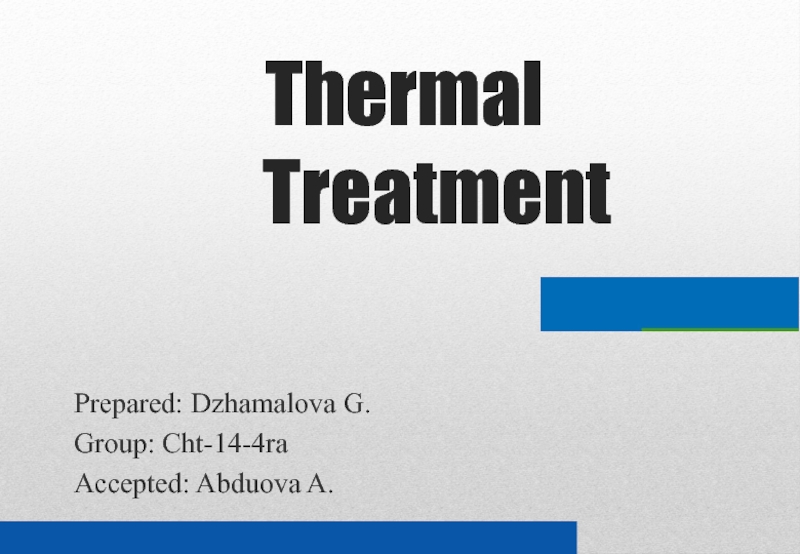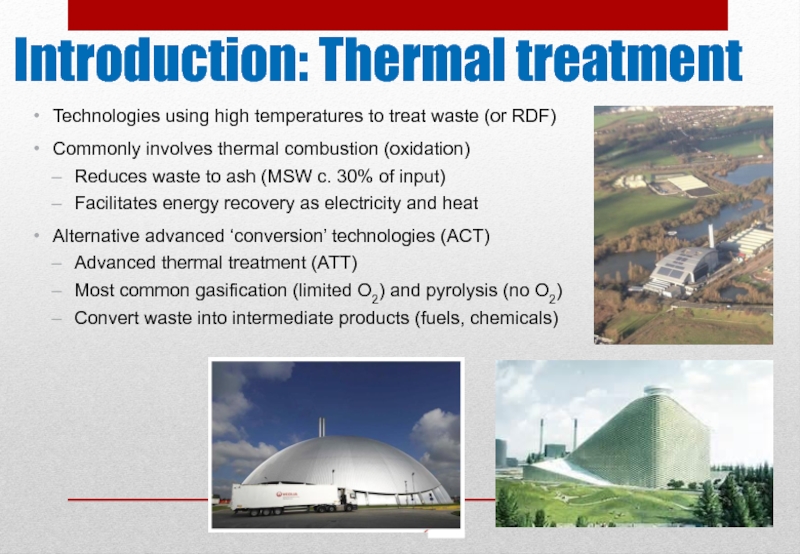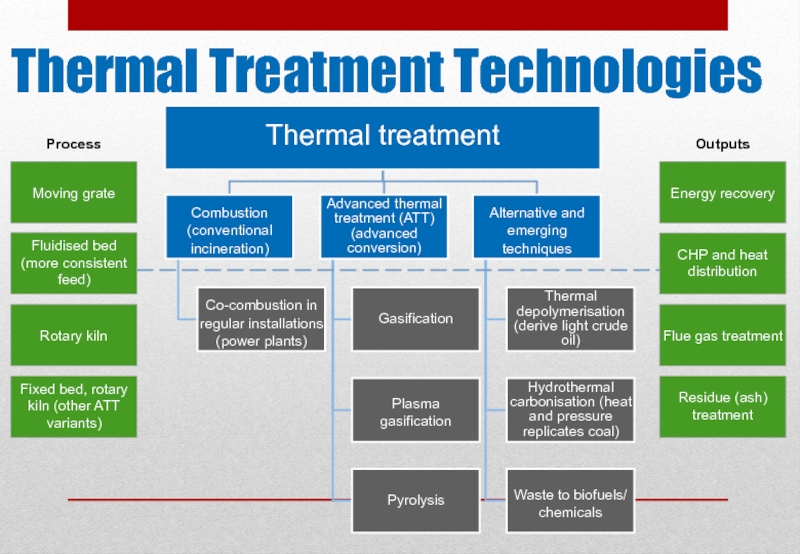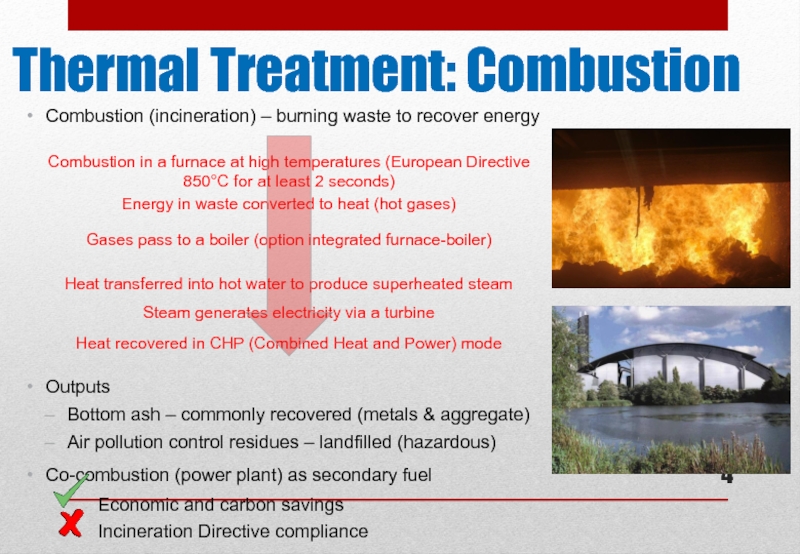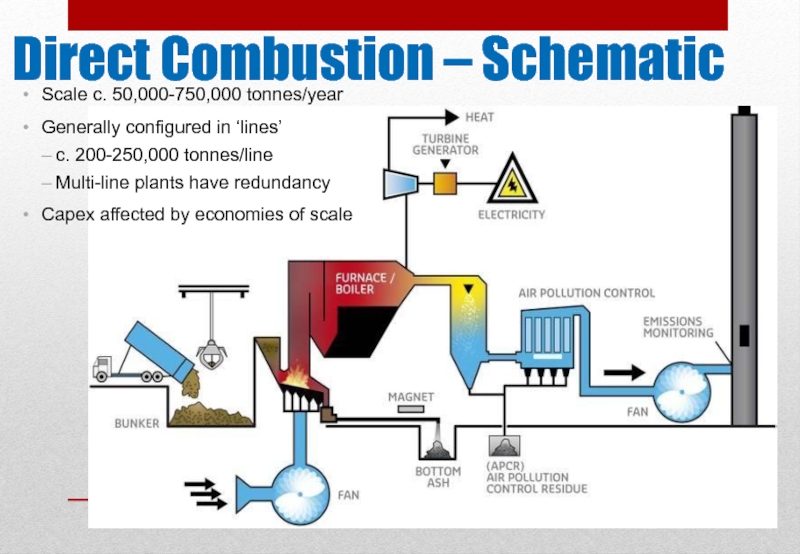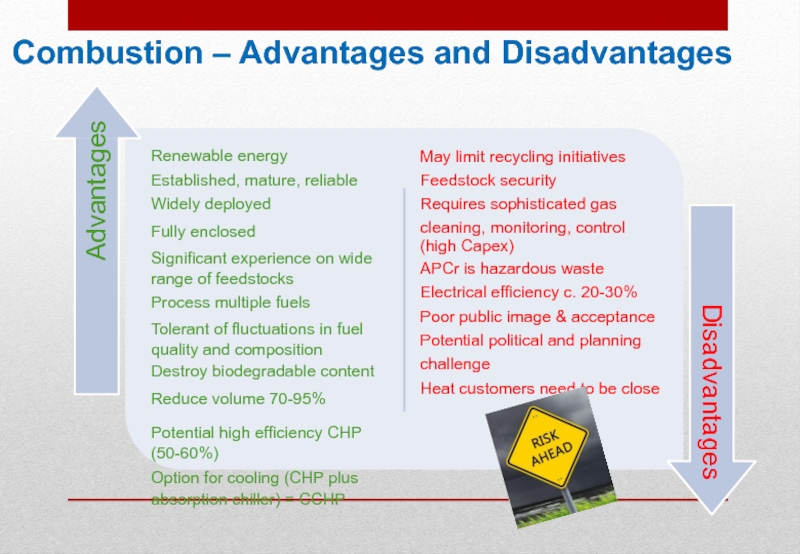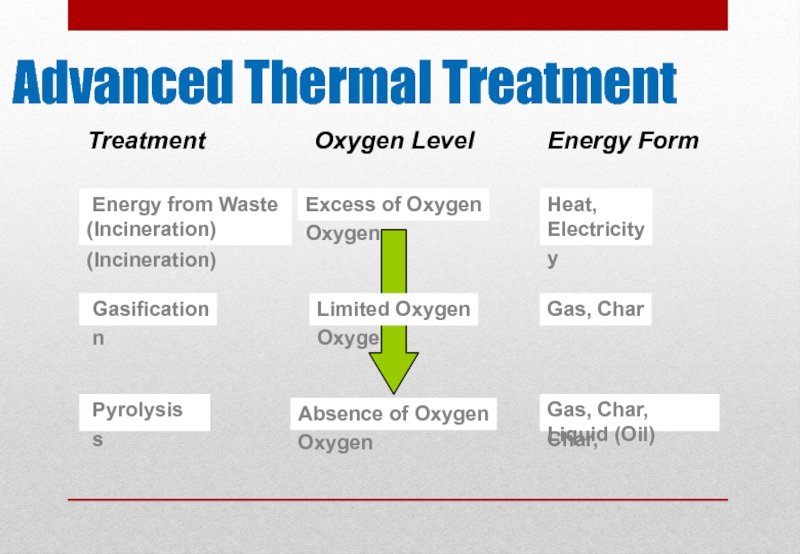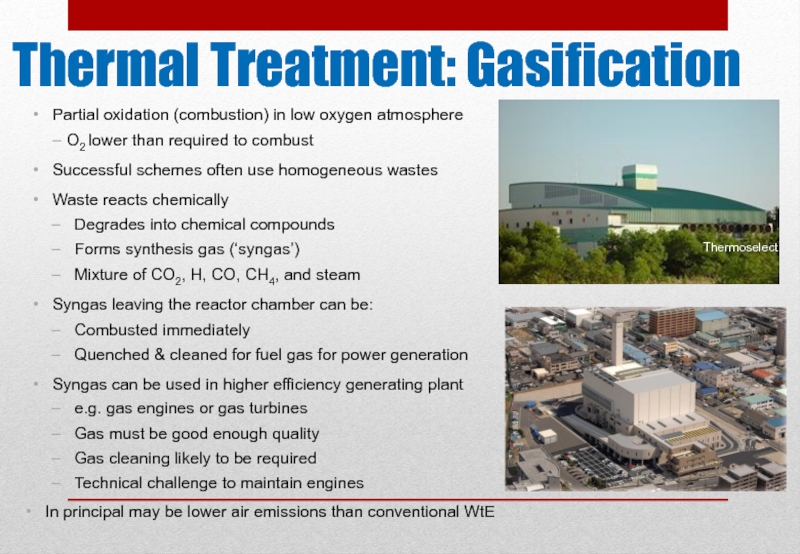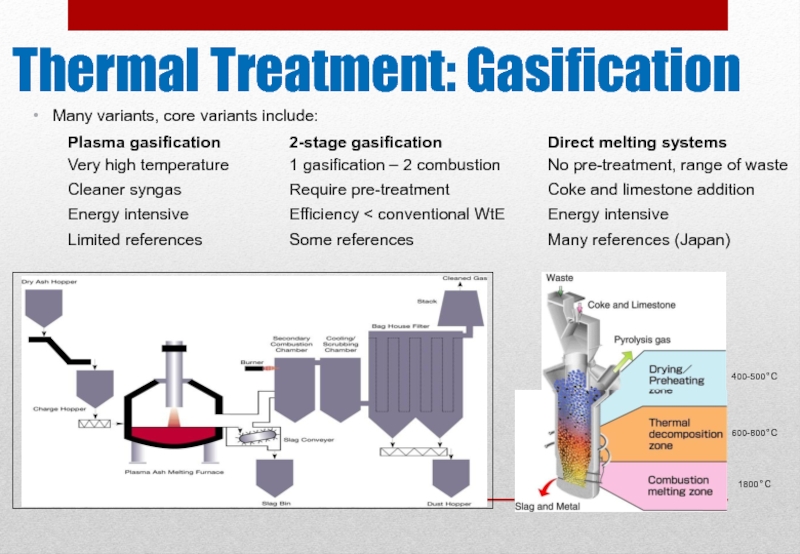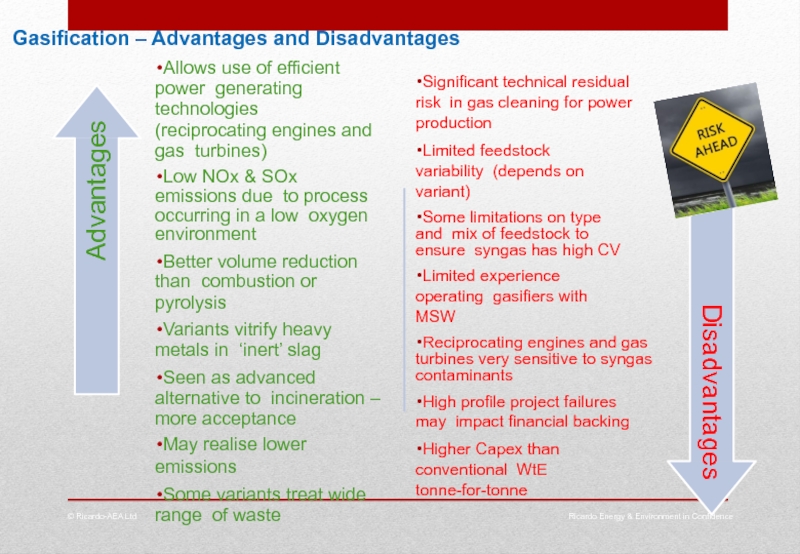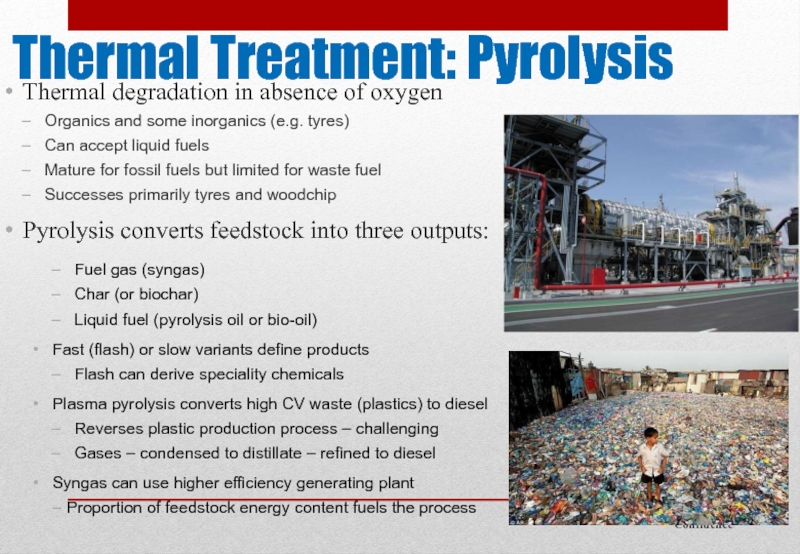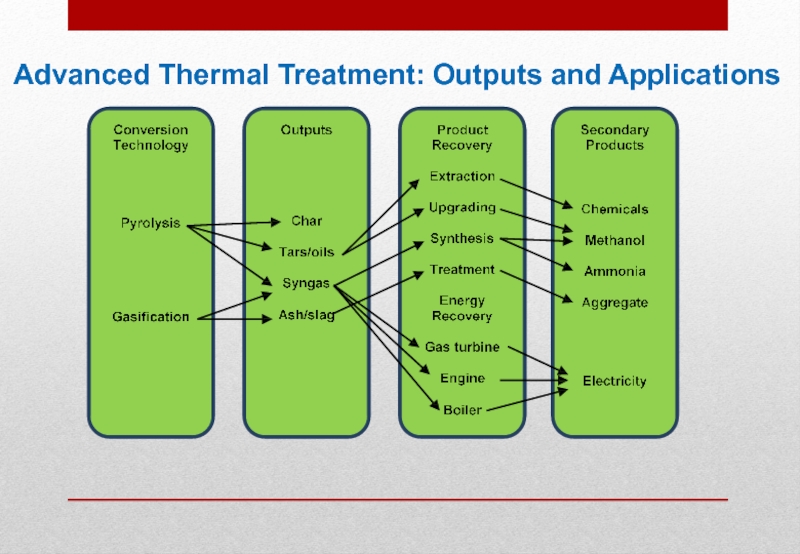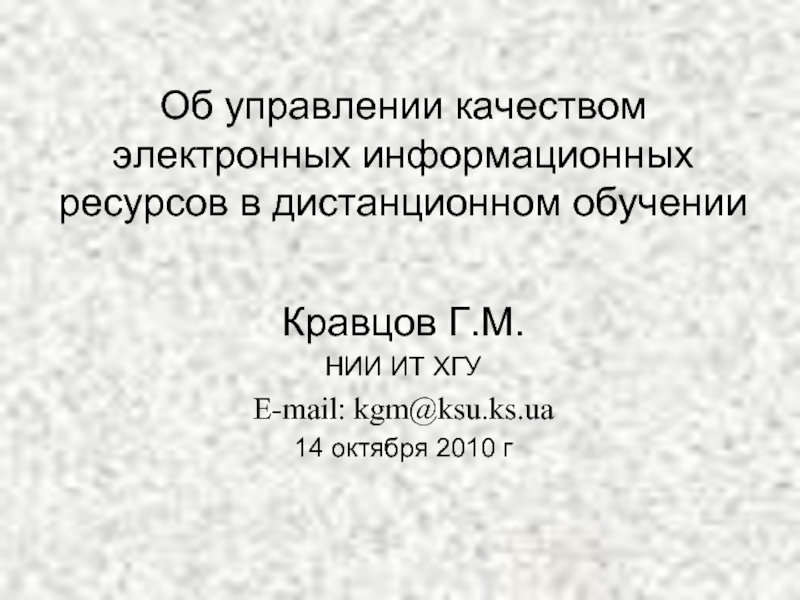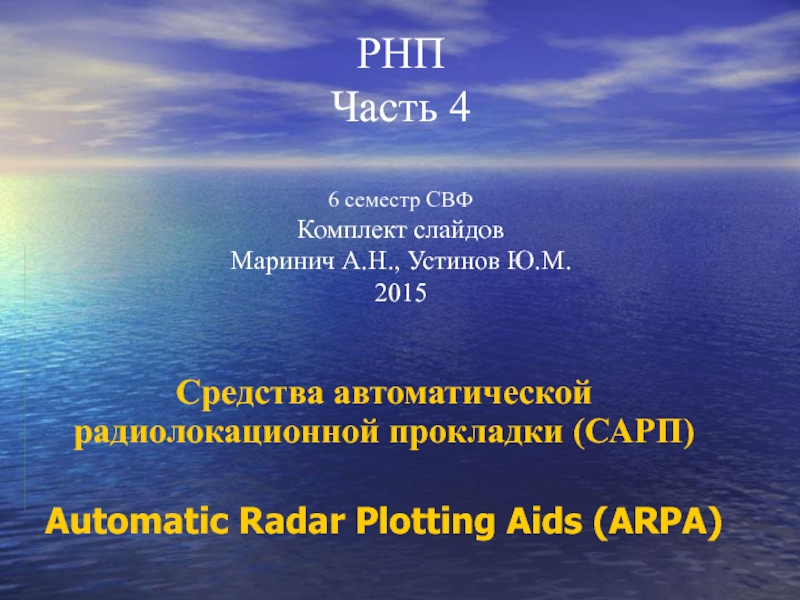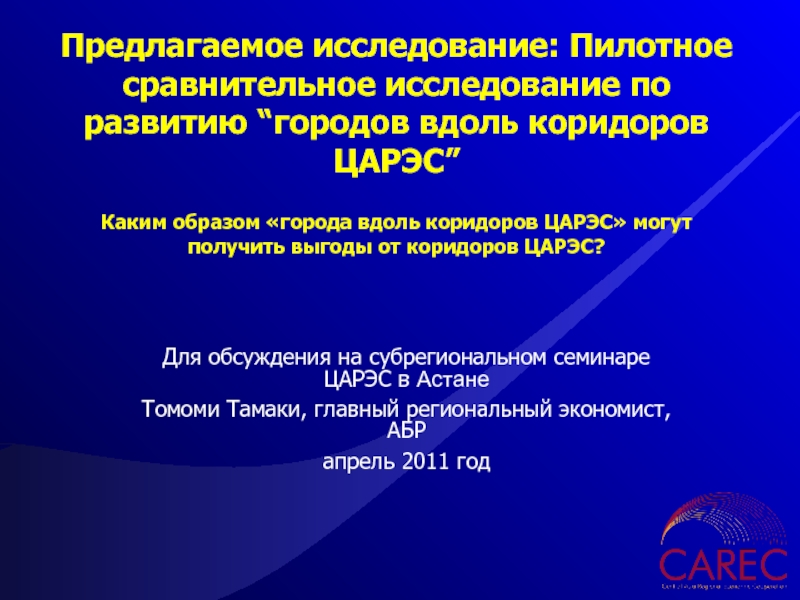- Главная
- Разное
- Дизайн
- Бизнес и предпринимательство
- Аналитика
- Образование
- Развлечения
- Красота и здоровье
- Финансы
- Государство
- Путешествия
- Спорт
- Недвижимость
- Армия
- Графика
- Культурология
- Еда и кулинария
- Лингвистика
- Английский язык
- Астрономия
- Алгебра
- Биология
- География
- Детские презентации
- Информатика
- История
- Литература
- Маркетинг
- Математика
- Медицина
- Менеджмент
- Музыка
- МХК
- Немецкий язык
- ОБЖ
- Обществознание
- Окружающий мир
- Педагогика
- Русский язык
- Технология
- Физика
- Философия
- Химия
- Шаблоны, картинки для презентаций
- Экология
- Экономика
- Юриспруденция
Thermal Treatment презентация
Содержание
- 1. Thermal Treatment
- 2. Technologies using high temperatures to treat waste
- 3. Thermal Treatment Technologies
- 4. Combustion (incineration) – burning waste to recover
- 5. Direct Combustion – Schematic Ricardo Energy &
- 6. Combustion – Advantages and Disadvantages
- 7. Advanced Thermal Treatment Excess of
- 8. Partial oxidation (combustion) in low oxygen atmosphere
- 9. Many variants, core variants include: Thermal Treatment: Gasification 400-500°C 600-800°C 1800°C
- 10. Gasification – Advantages and Disadvantages Allows use
- 11. Thermal Treatment: Pyrolysis Thermal degradation in absence
- 12. Advanced Thermal Treatment: Outputs and Applications
Слайд 2Technologies using high temperatures to treat waste (or RDF)
Commonly involves thermal
Reduces waste to ash (MSW c. 30% of input)
Facilitates energy recovery as electricity and heat
Alternative advanced ‘conversion’ technologies (ACT)
Advanced thermal treatment (ATT)
Most common gasification (limited O2) and pyrolysis (no O2)
Convert waste into intermediate products (fuels, chemicals)
Introduction: Thermal treatment
Слайд 3Thermal Treatment Technologies
Thermal treatment
Combustion (conventional incineration)
Co-combustion in regular installations (power plants)
Advanced
Gasification
Plasma gasification
Pyrolysis
Alternative and emerging techniques
Thermal depolymerisation (derive light crude oil)
Hydrothermal carbonisation (heat and pressure replicates coal)
Waste to biofuels/ chemicals
Energy recovery
CHP and heat distribution
Flue gas treatment
Residue (ash) treatment
Moving grate
Fluidised bed (more consistent feed)
Fixed bed, rotary kiln (other ATT variants)
Rotary kiln
Process
Outputs
Слайд 4Combustion (incineration) – burning waste to recover energy
Combustion in a furnace
Energy in waste converted to heat (hot gases) Gases pass to a boiler (option integrated furnace-boiler)
Heat transferred into hot water to produce superheated steam
Steam generates electricity via a turbine
Heat recovered in CHP (Combined Heat and Power) mode
Outputs
Bottom ash – commonly recovered (metals & aggregate)
Air pollution control residues – landfilled (hazardous)
Co-combustion (power plant) as secondary fuel
Economic and carbon savings Incineration Directive compliance
Thermal Treatment: Combustion
Слайд 5Direct Combustion – Schematic
Ricardo Energy & Environment in Confidence
Scale c. 50,000-750,000
Generally configured in ‘lines’
– c. 200-250,000 tonnes/line
– Multi-line plants have redundancy
Capex affected by economies of scale
Слайд 6Combustion – Advantages and Disadvantages
Renewable energy Established, mature, reliable Widely deployed
Fully
Significant experience on wide range of feedstocks
Process multiple fuels
Tolerant of fluctuations in fuel quality and composition
Destroy biodegradable content Reduce volume 70-95%
Potential high efficiency CHP (50-60%)
Option for cooling (CHP plus
absorption chiller) = CCHP
May limit recycling initiatives Feedstock security Requires sophisticated gas
cleaning, monitoring, control
(high Capex)
APCr is hazardous waste Electrical efficiency c. 20-30% Poor public image & acceptance Potential political and planning
challenge
Heat customers need to be close
Advantages
Disadvantages
Слайд 7Advanced Thermal Treatment
Excess of Oxygen
Limited Oxygen
Absence of Oxygen
Energy from Waste
(Incineration)
Heat,
Electricity
Gasification
Gas, Char
Pyrolysis
Gas,
Excess of Oxygen
Limited Oxygen
Absence of Oxygen
Energy from Waste (Incineration)
Heat, Electricity
Gasification
Gas, Char
Pyrolysis
Gas, Char, Liquid (Oil)
Treatment
Oxygen Level
Energy Form
Слайд 8Partial oxidation (combustion) in low oxygen atmosphere
– O2 lower than required to
Successful schemes often use homogeneous wastes
Waste reacts chemically
Degrades into chemical compounds
Forms synthesis gas (‘syngas’)
Mixture of CO2, H, CO, CH4, and steam
Syngas leaving the reactor chamber can be:
Combusted immediately
Quenched & cleaned for fuel gas for power generation
Syngas can be used in higher efficiency generating plant
e.g. gas engines or gas turbines
Gas must be good enough quality
Gas cleaning likely to be required
Technical challenge to maintain engines
In principal may be lower air emissions than conventional WtE
Thermal Treatment: Gasification
Thermoselect
Слайд 10Gasification – Advantages and Disadvantages
Allows use of efficient power generating technologies
Low NOx & SOx emissions due to process occurring in a low oxygen environment
Better volume reduction than combustion or pyrolysis
Variants vitrify heavy metals in ‘inert’ slag
Seen as advanced alternative to incineration – more acceptance
May realise lower emissions
Some variants treat wide range of waste
Significant technical residual risk in gas cleaning for power production
Limited feedstock variability (depends on variant)
Some limitations on type and mix of feedstock to ensure syngas has high CV
Limited experience operating gasifiers with MSW
Reciprocating engines and gas turbines very sensitive to syngas contaminants
High profile project failures may impact financial backing
Higher Capex than conventional WtE tonne-for-tonne
© Ricardo-AEA Ltd
Ricardo Energy & Environment in Confidence
Advantages
Disadvantages
Слайд 11Thermal Treatment: Pyrolysis
Thermal degradation in absence of oxygen
Organics and some inorganics
Can accept liquid fuels
Mature for fossil fuels but limited for waste fuel
Successes primarily tyres and woodchip
Pyrolysis converts feedstock into three outputs:
Ricardo Energy & Environment in Confidence
Fuel gas (syngas)
Char (or biochar)
Liquid fuel (pyrolysis oil or bio-oil)
Fast (flash) or slow variants define products
Flash can derive speciality chemicals
Plasma pyrolysis converts high CV waste (plastics) to diesel
Reverses plastic production process – challenging
Gases – condensed to distillate – refined to diesel
Syngas can use higher efficiency generating plant
– Proportion of feedstock energy content fuels the process
